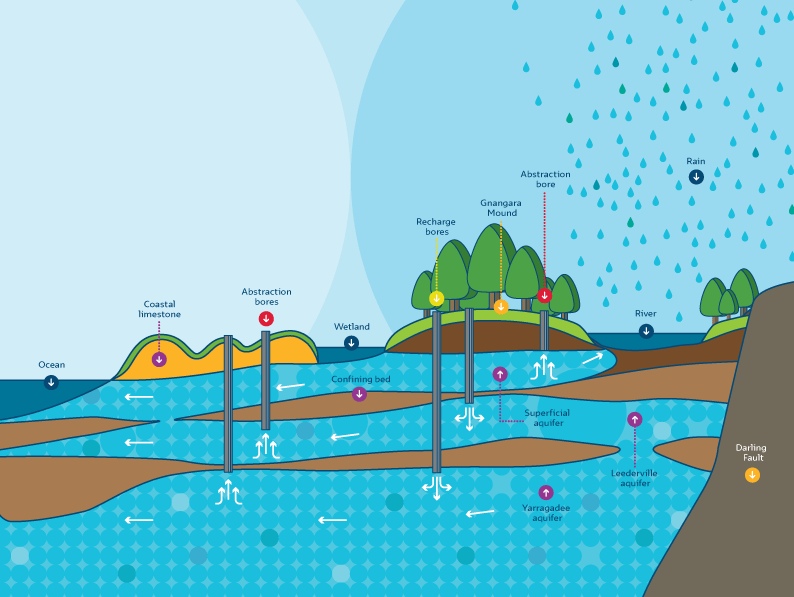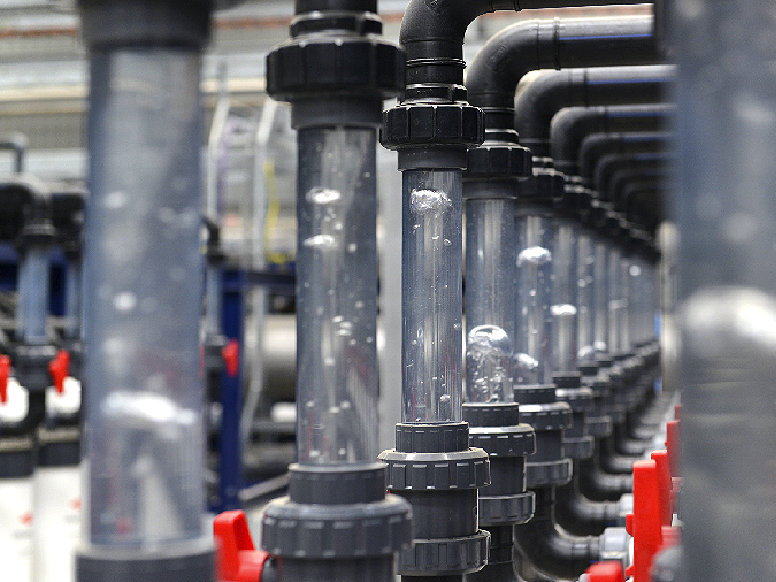Groundwater comes from rain that trickles down into our aquifers. It supports the lakes, wetlands, bushland and urban trees that make our city green. It's also under pressure due to decreasing streamflow into dams and increasing demand.
Perth's groundwater system remains vital to meeting our water needs, making up around 40% of the largest scheme we manage, the Integrated Water Supply Scheme.
Groundwater is also used in local community parks and recreation areas, school grounds, local businesses and 1 in 4 household gardens through bores.
The Department of Water and Environmental Regulation (DWER) is responsible for allocating and licensing groundwater use in Western Australia. Together we work to sustainably manage this valuable resource.
To meet changes to our groundwater licence and secure our supply and protect our lakes and wetlands we are investing in additional bores that draw water from deep aquifers. This will allow us to transfer our groundwater abstraction to less sensitive locations, including the deeper aquifers.
Changing our groundwater use
Over the past 10 years we've expanded our use of the deepest and most reliable groundwater for supply to Perth.
- We've also accessed water from the coastal superficial aquifers that would have otherwise discharged into the ocean.
- Use of groundwater from the superficial aquifers has reduced, lessening impacts on some of our wetlands and lakes that are supported by the aquifer.
Expanding our groundwater network
We have invested in a secure, deep groundwater network so that a large amount of Perth's drinking water will come from deep groundwater sources. This means we'll be able to:
- Replenish the deep Leederville and Perth Yarragadee aquifers with recycled water through our groundwater replenishment scheme.
- Draw water from the replenished deep aquifers.
- Develop new coastal superficial groundwater schemes to use water that currently flows naturally into the ocean at Eglinton, Yanchep and Two Rocks.
- Continue to reduce our groundwater take from environmentally sensitive areas.
Our aquifers
Aquifers are mostly composed of sand, sandstone and limestone, but they can also be made of gravel, heavily fractured granite, or any other rock material that has enough connected gaps to store and move water through it. In this way, aquifers retain water like a sponge. It's from here that we take water from the ground and feed it into our water supply.
In Perth there are 3 layers of aquifers:
- Superficial aquifer - the shallowest aquifer located closer to the surface and often expresses itself as wetlands or lakes.
- Leederville aquifer (confined) - below the Superficial aquifer, and is separated by confining layers which minimises vertical water movement between the Superficial and Leederville aquifers. . The Leederville aquifer is often several hundred metres thick, and in some areas it connects with the surface Superficial aquifer.
- Yarragadee aquifer (confined) - the oldest and deepest aquifer that provides a robust supply even in dry years because of its vast storage and limited connection to the surface environment.

Protecting groundwater
We all need to use groundwater wisely to help secure Perth’s water future.
Overuse of groundwater can result in a system out of balance. If garden bores draw water faster than groundwater is recharged by rainfall, groundwater levels can drop. This has a serious impact on Perth’s lakes, wetlands, parks and bushland. Falling groundwater levels can also lead to water quality problems, including acid sulphate soils and saltwater intrusion.
Reducing streamflow combined with groundwater abstraction, is having a measurable and visible impact on Perth’s waterways and wetlands. The community, government, businesses, industry, local governments and households all have a role to play to protect the precious resource that is groundwater.

Recharging our groundwater supplies
We use purified recycled water to recharge our groundwater supplies. We were the first utility in Australia, and among the first in the world, to replenish our groundwater supplies this way.
Learn more

